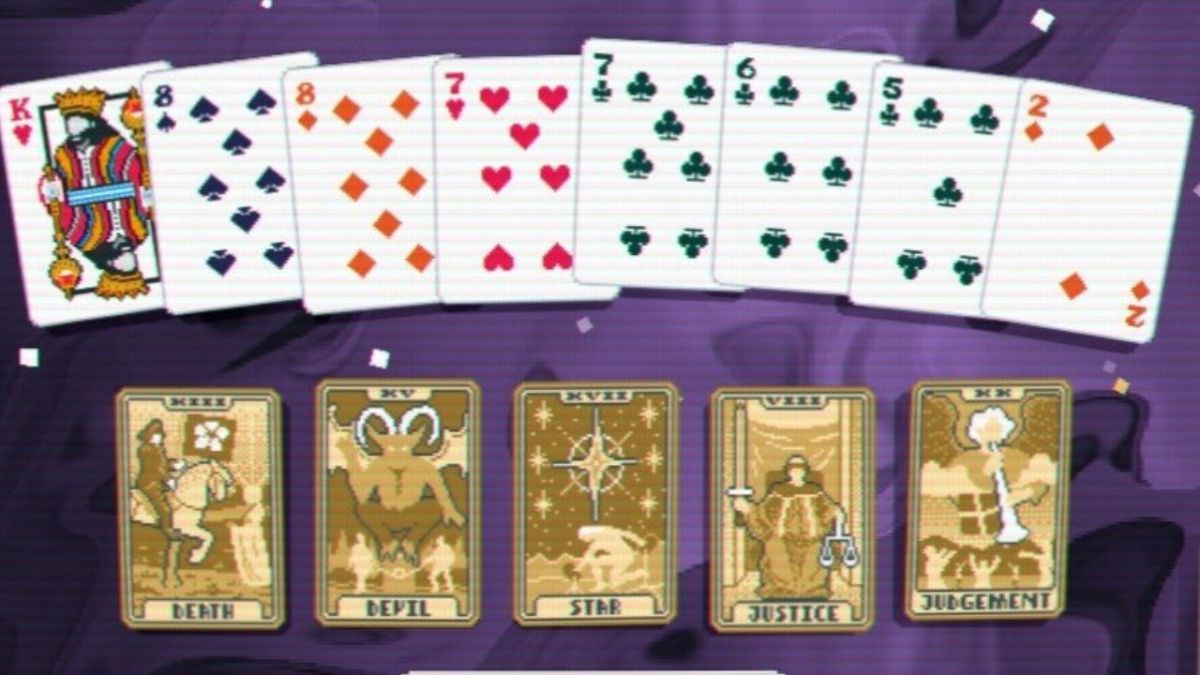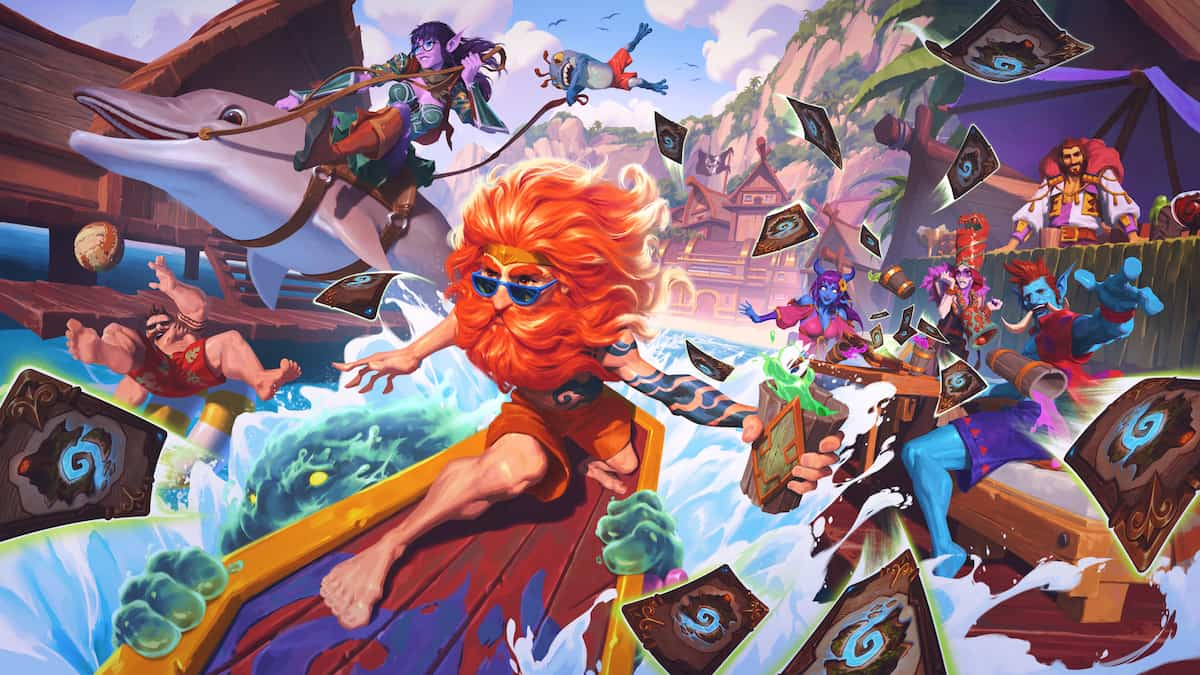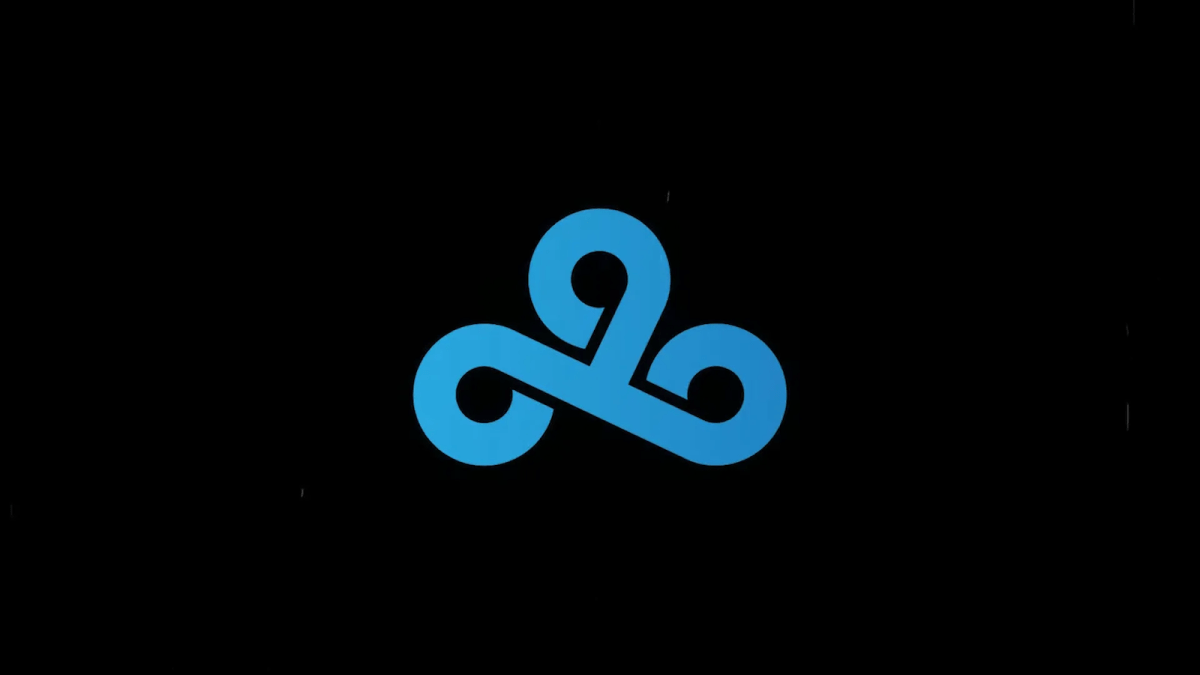Introduction
Told you. Last week on The New Standard I ran head first into this list, which instantly made me want to play it. Then, after some searching, I discovered a built that Zarathustra brought to the top of the legend ladder. And after that, I realized it had all the juicy cards that were about to get nerfed. But you think that’s going to stop me? This week we’re adapting a strong shell and showing that fringe cards don’t make a list. The core does. This is a “nearly no spell” Druid deck that does the same thing Big-Spell Priest and Tempo Rogue do. However, things are a bit different this time around because of the way the class plays and operates. How different? To answer that, we gotta look at the cards.
Key Cards
The Curve
Something that I always find so interesting about lists like this is the way they depend on a curve. Not just for the classic “one-two-three” scenario that so many decks want to have, but also for pure pressure. This is a theme we will cover a lot in this guide, but this deck has all of the classic advantages of all-in minion decks like Tempo Rogue and Big-Spell Priest with the added bonus of being able to modify the game plan on the fly. I love versatility, and it is on full display once again here. An example of that is how this curves. Rather than just run out one solid body after another (though you can do that) you have a lot of minions that do things alongside your gameplan. That is very important because it allows you to switch up your style for each situation. Don’t get caught thinking you’re a one-dimensional tempo or aggro build. If you have a chance to get aggressive, or if you need to sit back and slow things down, you can. You have strong finishers and several ways to heal as well. Play to them if you need to.
You’ll notice that one thing this deck does not have is synergy. There are no real mini combos here or tricky plays. You have a plan and you stick to it. However, it is important to remember that your opponent doesn’t know that. This is a powerful build, but it is not well known. That is key when piloting this because there are a lot of players (most players in fact) that are going to have no idea the top end of your curve is coming. If you ever begin a game with Fire Fly or Enchanted Raven, your opponent will instantly assume you’re aggro and sculpt their starting turns accordingly. Take advantage of that by acting like a fast Druid build. Run out quick minions, build pressure, and get your opponent to commit key spells or minions to the board. Then, just when they think they might stabilize, you hit them where it hurts.
Greedy Sprite/Mire Keeper
One of my favorite parts about this build is the ramp. I asked above, how is this different than Big-Spell Priest or Tempo Rogue? Though all three decks have many similarities (tempo-based builds, limited spells, etc.) this one has the classic Druid ramp. Ramp is an insanely strong tool that has long pushed Malfurion over the edge in a lot of cases. However, as good as it is in things like Jade and Big Druid, it is incredible in faster builds like this one. Your goal is to always press the board, but having a backup plan is the kind of thing to be able to keep yourself in games against a diverse meta. Being able to suddenly go big or get two or three mana ahead to hit a big threat is wonderful.
There is nothing fancy here, and that’s what makes it so beautiful. You play some dudes, get some mana, and then use that to get to your OP finishers before your opponent has a chance to properly react. You always want to look for cards that don’t require a lot of extra work to use, and both Greedy Sprite and Mire Keeper net you value for free. The most important part of these cards is that you should never, under any circumstances, forget about the top end of your curve. If you have ramp cards in your hand, you should see how much you need to play them. Keeper and Sprite are both inherently weak cards. If you need to press the board, you almost always want to go with the bigger bodies and then catch up later. However, this is going to vastly depend on your curve. If you need a hail mary or a big card, the ramp is almost always worth the tempo loss. Also note that Sprite is much better not because Patches the Pirate is largely out of the meta.
Spellbreaker
Another great move for this build is the inclusion of double Spellbreaker. The 4/3 has always been a solid tech choice, and it has been getting better and better as Control Warlock has continues to move up in popularity. When building, you have to know your deck’s strengths and weaknesses. The great thing about Spellbreaker is that it is a solid card that helps solve a bunch of problems while sacrificing nothing. Yes, the body is nothing to write home about, but it enables you to put out a threat, fill in your curve, and gives you an answer against a ton of different decks. This is mainly here for Warlock, but there is always something you want to silence.
A big advantage of double Spellbreaker is that, as with double Savage Roar, the first one has quite a bit of utility. Normally, you need to hold onto this card for something like Voidlord where if you don’t silence it, you lose. Having two means the first one can be used much more liberally. For example, you can use this to shut down a buffed Houndmastered beast or something like Murloc Warleader just to stall your opponent. Don’t always think of silence as a card for the haymakers. Spellbreaker can make some good tempo pushes, especially against other midrange decks.
Leeroy Jenkins
I know we talk about Leeroy Jenkins a lot on this series, but it is important to highlight when aggression plays a pivotal role in certain builds. This is one such deck. Having a burst finisher is important because it inherently changes the way a deck operates. Knowing you have damage at your disposal means you can take risky routes or push against your opponent when you normally would be more careful. It is always good to know that you have Leeroy as an potential out. Many players become too focused on their hands and forget about their upcoming draws. That can then lead them into situations where they misplay because they forget about their deck. There are many decks that are going to give you a tight window to kill them. Missing the chance to pressure and then topdecking a non-lethal Leeroy can be a disaster. Always think about the legendary, especially if you’re ever thinking about Ultimate Infestationing someone in the face.
As with so many cards we cover, the power in Leeroy Jenkins is his surprise factor. There is not a single Druid deck in the game, from Jade to Ramp to Aggro, that runs Leeroy. Not only that, but once you start curving and playing your bigger midrange ramp cards, your opponent is going to completely drop their guard. They will see you as a big-shell deck and not expect you to have any hard burst outside of the occasional Ultimate Infestation. You need to take full advantage of that and play to the five drop when possible. If you find yourself needing to set up lethal, do not be afraid to bait your opponent into using AOE or hard removal. Even if you lose value by “wasting” minions, as long as they don’t heal or play a taunt you’ll be fine.
The Nerfs
It would not be fair to talk about this list (or this shell) without mentioning the various nerfs. This card took a big hit with Bonemare, Corridor Creeper and Patches the Pirate. There is no doubt that those three cards were incredibly powerful, but most of the other top tier decks are losing the beaters as well. That means you are going to be on an even playing field, which allows your Spiteful Summoners and Ultimate Infestation/ramp package to carry this. The big question then becomes, what cards are we running instead? While I still like trying Patches (as covered in the video) I think there are many options for other four slots. I like the tech cards that are there right now, but you could also expand on the midrange threats if you wanted. There is no right answer to that, but whatever you do you want to shore up your tempo. Losing the seven spot of the curve stinks, but there is nothing else that fits in that gap. Rather, you should focus on more midrange beaters or strong early game cards. As long as you can move up through the early turns, you’ll be alright.
Deck Code
AAECAZICCK8EkAeRvA KbywLCzgKZ0wKc4gKj5gILqAXyBb6uArazA uvCAsrDAsrLAofOAvnmAtDnAtfrAgA=
Matchups
Note: Just writing based on my early notes on the post-nerf meta.
Control Warlock
As unstable as things are on the ladder right now, I know that Control Warlock is going to be good. The build has a ton of power, and it was basically untouched by the recent changes. I am not sure if Cube or more Classic Control is going to take over (it will largely depend on what other decks enter tier one) but it is going to be here a while. This is going to be one of the toughest matchups, but you can get there as long as you push hard. I mentioned earlier that this is not an aggro deck, but it is in this match. Warlock simply has too many tools and ways to heal for you to try to play the long game. Your goal in this one is to get out as many big threats as you possibly can, and then rapidly stack up body after body. Not only will that stretch Warlock thin, but it will also prevent them from focusing on their combo. That means, even if they do get some breathing room, you will have time to quickly snatch back priority.
Your goal in this one is to get your opponent into a position where they need to get out a Voidlord to survive. That way, you can crush them with Spellbreaker (especially if you’ve already played the first one). All of your turns should be spent pushing your opponent back into a corner so that you can control the pace of the game. Your deck can be susceptible to both hard removal and AOE. You have ways to get around that (namely Spiteful Summoner and Ultimate Infestation) but those won’t work if you’re losing the board to an army of endless demons. While some things have changed on the ladder, a lot haven’t. You need to close this game out by the time your opponent gets to ten mana. Apply pressure and always favor ramp in the early game if you can.
Big Spell Priest
Razakus Priest is dead. Long live Razakus Priest (or not). I know some people will try to resurrect the build from the ashes, but losing Raza pretty much knocked the archetype out for good. The one mana really hurts the combo potential, which is what the deck had going for it. However, do not think Anduin is gone. Rather than just disappear, it seems that Priest (as predicted by yours truly) has fully adapted to the Big Spell package. Yes, they no longer have access to Corridor Creeper or seven mana Bonemare, but Drakonid Operative, Spiteful Summoner, and Duskbreaker make a very formidable package. For that reason, this game is going to be a mirror match of sorts, with each person vying to gain control of the board. Just focus on tempo and playing to your finishers. Damage is basically a non-factor because Priest has no way to answer you once your in control. Mulligan aggressively for an early curve/ramp and then build from there.
Everything here is about turn six. Spiteful Summoner is by far the most powerful card in either deck and you need to get to it as soon as you possibly can. The six drop is a gigantic swing that neither deck is properly equipped to handle. Even if you have the board, you should try to amass as much power as you can so that if your opponent does drop the 4/4 you can take it down and move on. Another important note is that you need to watch out for Mind Control in longer matches. You will likely hit your ten mana limit before your opponent, but minion vs. minion battles can drag on. Control is one of the most powerful cards in those games and you need to spread out your power to prevent it from blowing you out.
Aggro Paladin
One of the many truths of Hearthstone is that aggro decks will always be strong in times of flux. As we are in one such time, Aggro Paladin has become an early force in the new meta. The build has all of the old power, but they have also gone back to the old murloc synergy for extra push. This game is going to be the same as its always been, which means you need to fight to get ahead of them. Call to Arms is going to blow you out of the water if you’re behind. So much so, that if you can’t get a handle on the board by turn four you might as well call this one quits. That may sound like an exaggeration, but you are not a deck built for comebacks. You are built for early leads. To win this game you need to find ways to fight your opponent off the board between turns one and three. Don’t try and keep midrange cards in your mulligan. You need to get going as early as possible.
Another important part of this game is to understand when you need to get in damage and when you need to be careful. Murloc Paladin has a lot of synergy between their minions. As a result, leaving two or three key bodies alive can suddenly leave you locked out of the board. Not only that, but some decks also run random buffs like Blessing of Kings and Spikeridged Steed. However, as strong as those mini combos can be, Paladin also has a big problem with trying to control a string of large bodies. If you feel that your opponent is making desperate plays, or if they have a dead turn, you need to turn up the heat. Know when leaving a minion alive can ruin you, and know when you can just focus on damage.
Hunter
Currently, the only big shift I’ve noticed (besides some notable absences) is the resurgence of Hunter. Rexxar is always strong, but he comes and goes because his power is tied to the meta much more than his cards. The midrange build is the most popular version right now, and that means you want to treat this game a lot like you do Paladin. Hunter’s biggest strength is that, when facing other board-focused builds, they are almost going to win if they have control of the game by turn four. However, they also have a huge weakness in that they have a very difficult time if they don’t get to that turn four scot-free. You want to make your opponent’s life as miserable as possible, and that means putting on pressure. Big minions are your lifeblood in this one. Never miss an opportunity to grow a board or get a good trade. However, you want to try hard to get a push going on turn five. Your board should be big, but you never want to have to deal with Savannah Highmane while on even terms. Be extra careful for the first four turns so that you don’t slip behind, and then go hard. If this game goes long, do everything you can to gain life and stay ahead of steady shot.
Mulligan Guide
Mulliganing with this deck is quite simple because, as you run no set spells, you just want to hit your curve as hard as you can. Enchanted Raven, Fire Fly, and Prince Keleseth are your must-keeps. Greedy Sprite, Southsea Captain, Tar Creeper are all great on curve or with the coin, and you should try to keep Mire Keeper, Saronite Chain Gang when you have a great opening.
Conclusion
Nerfs be damned. This was a cool deck when I first saw it, and that still holds true. Though it did lose some key pieces, so did every other midrange nearly-no-spell style list in the game. It is easy to dismiss these builds as weak without some of the key cards, but the truth is their core is so strong and the ramp/finishers of this build are so good, that none of that matters. If you enjoy playing with strong minions, this is going to be the build for you. Until next time, may you always Spiteful into Y’shaarj.





Published: Feb 14, 2018 10:31 pm